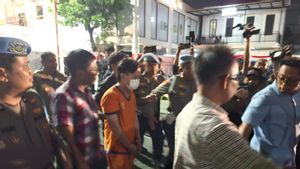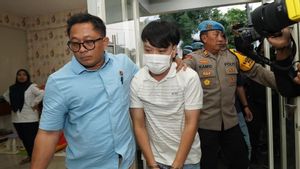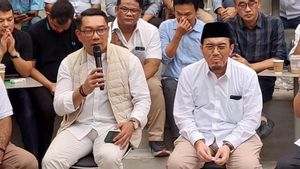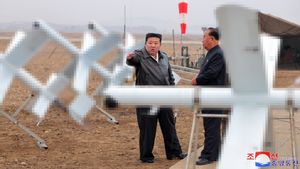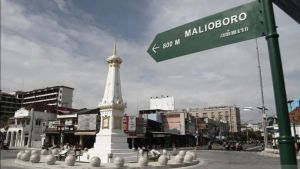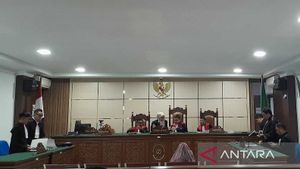JAKARTA - DKI Jakarta Governor Anies Baswedan said the revocation of Regional Regulation Number 1 of 2014 concerning Detailed Spatial Planning and Zoning Regulations (RDTR-PZ) follows the mandate of the Job Creation Act (Ciptaker).
Anies during the plenary meeting of the Raperda on the Revocation of Regional Regulation Number 1 of 2014 at the DKI Jakarta DPRD building, explaining that the regulation is set to support the acceleration of increasing investment value and ease of doing business.
Therefore, he continued, there has been a change in policy direction as well as a change in regulatory norms in various business sectors, including policies in the spatial management sector.
"This revocation, in accordance with Government Regulation Number 21 of 2021 concerning the Implementation of Spatial Planning, requires the determination of the RDTR-PZ in the form of a regional head regulation by following the guidelines for the preparation and presentation of the database in accordance with standard norms, procedures and provisions that apply nationally," Anies said. BETWEEN, Monday, August 1st.
Anies emphasized that the DKI Jakarta Provincial Government will continue to optimize and support the realization of sustainable productive use of space.
"Through efforts to integrate national and sectoral development policies, accommodate the dynamics of development and strengthen the institutionalization of spatial planning," said Anies.
Deputy Chairperson of the DKI Jakarta DPRD, Misan Samsuri, explained that the plenary revocation of the Regional Regulation on RDTR-PZ was held based on the letter of the Governor of DKI Jakarta Province Number e-0026/HK.01.02 dated June 28, 2022 regarding Revocation of Regional Regulation Number 1 of 2014 concerning RDTR-PZ.
Following up on this, the Deliberative Body (Bamus) and the executive have set a discussion schedule on July 19, 2022.
modern city
Met after the plenary meeting, Anies said that the long process of drafting the Regional Regulation on RDTR-PZ was because stakeholders in Jakarta wanted to ensure that the new spatial plan was in line with Jakarta's long-term vision of building a healthy modern city.
"A city with enough greenery, green open space, blue open space," he said.
On the other hand, explained Anies, the concept of housing and workplaces is designed to be oriented to public transportation facilities so that infrastructure development has a "transit oriented development" concept, namely around the station there is room for growth, therefore the details must be detailed and neat so that time is longer.
Regarding green and blue open spaces, Anies emphasized that it would not only be added but also evenly distributed in order to create a healthy ecosystem and a distance that allows fauna to move freely.
"For example, if we want the birds to live in this city, then the distance between the parks is the same as the distance the birds fly," he said.
Therefore, Anies continued, it is not only the percentage of green open space but the distance between green open spaces is also sufficient, so that residents do not need to go from one village to a far place just to get a park.
"That's one of the hopes for this RDTR," he said.
The English, Chinese, Japanese, Arabic, and French versions are automatically generated by the AI. So there may still be inaccuracies in translating, please always see Indonesian as our main language. (system supported by DigitalSiber.id)



